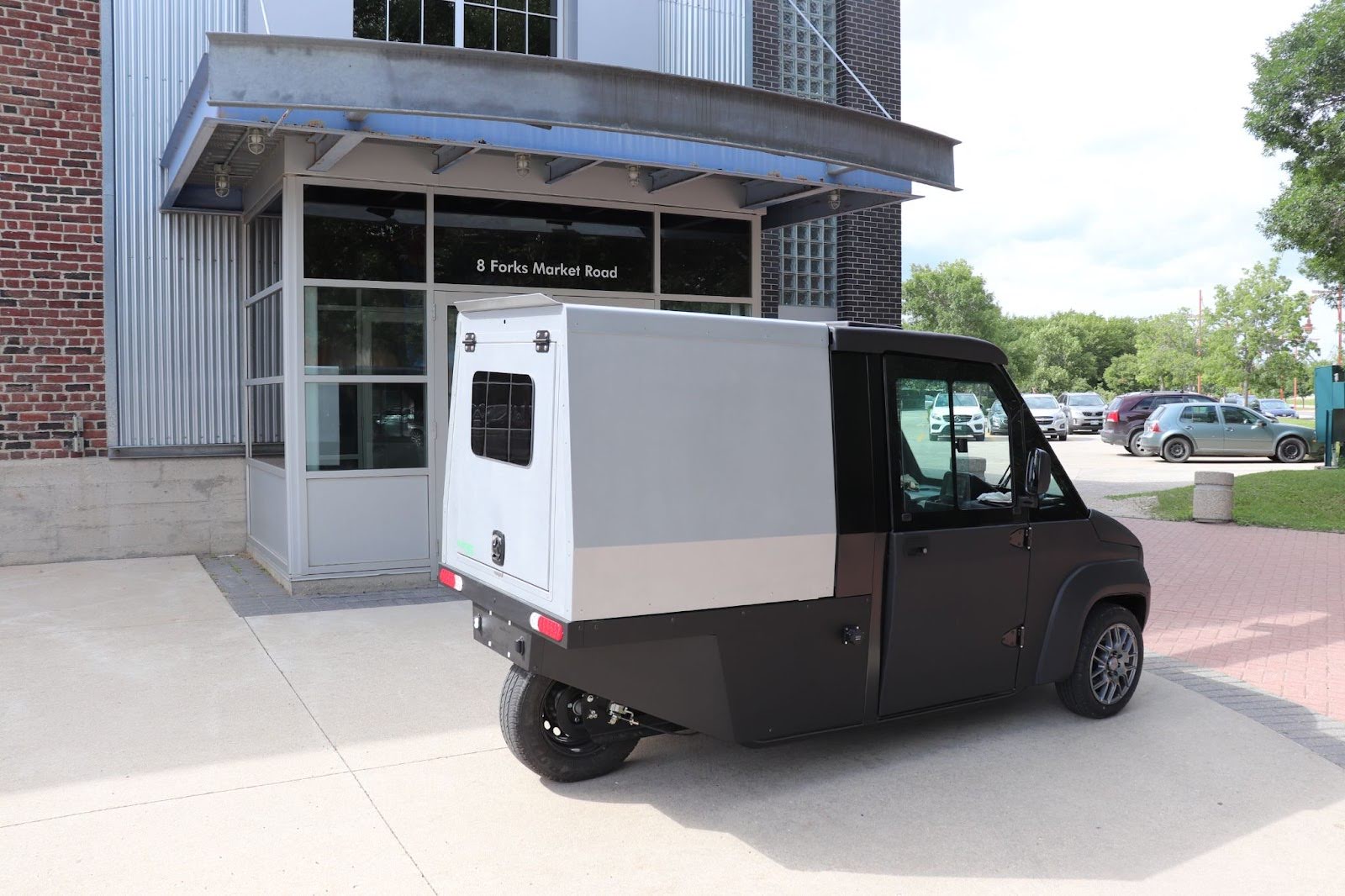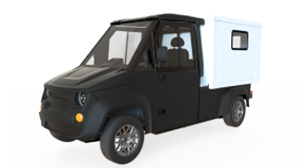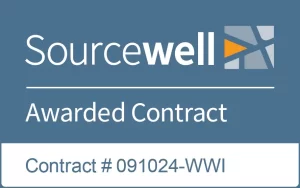Urban Logistics and the Growing Demand for Efficiency
The rapid expansion of e-commerce has reshaped urban logistics, placing unprecedented pressure on delivery systems. As cities become more densely populated, the demand for efficient and sustainable delivery solutions has surged. Traditional methods, like large delivery trucks, are no longer viable in many city centers due to space constraints, increased regulations, and the growing need for faster delivery.
Challenges of Urban Delivery
One aspect often overlooked in urban logistics is how the evolution of consumer behavior has compounded these challenges. Instant gratification has become the norm, with same-day and next-day delivery now an expectation, not a luxury. This shift demands not just faster delivery routes but more strategically placed micro-warehouses and depots within urban hubs. Without efficient systems to connect these locations, companies face a loss in customer satisfaction, increased costs, and congestion.
Urban environments also bring environmental and spatial limitations that traditional logistics struggle to overcome. Cities often restrict access for large trucks in certain areas, particularly during high-traffic hours. The growing push for green infrastructure has also led to regulations limiting vehicle emissions and prioritizing sustainable transport solutions. As these constraints mount, businesses are forced to rethink how to meet the growing demand for deliveries while maintaining efficiency.
Solving these urban challenges requires innovative vehicles designed specifically for the complexities of city logistics.
The Rise of Small Delivery Vehicles
As the demand for faster and more efficient urban deliveries continues to grow, the use of small electric delivery vehicles has emerged as a solution that is not only practical but uniquely suited to modern city landscapes. While many industry leaders focus on speed and automation, the strategic advantage of small delivery vehicles like Westward’s MAX-EV 3 is their ability to transform urban delivery in ways that larger vehicles cannot.
Maneuverability in Tight Spaces
Large delivery trucks are inherently limited in their ability to navigate the narrow streets and complex alleyways of modern cities. Small electric vehicles, on the other hand, offer a level of agility that larger vehicles simply cannot match. What is often overlooked in logistics discussions is how these compact vehicles help reduce delivery time by:
- Avoiding bottlenecks in high-traffic areas.
- Navigating through narrow lanes, alleys, and streets with ease.
- Reducing the need for detours, which large trucks frequently face due to size restrictions.
Compact Design Advantage
The design of vehicles like the MAX-EV gives them a distinct advantage in urban logistics. Their compact form and features like a 13-foot turning radius allow them to handle tight corners and quickly pivot in crowded environments. This agility often goes unnoticed by larger logistics companies, yet it can make the difference between a delayed or on-time delivery.
Improved Access to Urban Areas
Small vehicles also offer better access to locations where delivery trucks are often banned or restricted, such as pedestrian zones or certain high-density urban neighborhoods. This improves delivery efficiency by:
- Accessing restricted areas where traditional trucks are not permitted.
- Reducing downtime due to roadblocks or traffic restrictions.
- Ensuring that deliveries can be made right at the doorstep, even in congested areas.
These small but impactful advantages redefine what it means to deliver in urban spaces, setting a new standard for efficiency and innovation in the logistics sector.
Reducing Traffic Congestion with Smaller Vehicles

In many cities, traffic congestion is not just a result of too many vehicles on the road but also the size of those vehicles. Traditional delivery trucks, while capable of carrying larger loads, contribute significantly to the clogging of urban streets. What many logistics experts overlook is the potential impact that small electric vehicles can have in reducing overall congestion.
Smaller Footprint, Greater Efficiency
Small electric delivery vehicles like the MAX-EV take up considerably less space on the road compared to traditional delivery trucks. This smaller footprint allows for smoother traffic flow, especially in crowded areas where space is already limited. Unlike larger vehicles that often cause bottlenecks when navigating tight streets, smaller vehicles can maneuver more freely without disrupting the flow of traffic.
Faster Delivery in Crowded Areas
An often-underappreciated benefit of smaller vehicles is their ability to make quicker deliveries in dense, high-traffic environments. They can park in tighter spots, reduce the time spent looking for parking, and move more seamlessly through crowded streets. These advantages translate into faster delivery times and an overall improvement in logistics efficiency within urban spaces.
Sustainability and Lower Carbon Footprint
The growing emphasis on sustainability in urban logistics often revolves around energy efficiency and reducing emissions. While many in the industry focus on shifting to electric power, they often fail to explore the deeper environmental impact of vehicle size in logistics. Smaller electric delivery vehicles offer distinct sustainability advantages beyond simply being emission-free.
Zero Tailpipe Emissions
Small electric vehicles like Westward’s MAX-EV 3 operate with zero tailpipe emissions, making them ideal for cities that are pushing toward carbon neutrality. However, the real environmental benefit goes beyond just lowering emissions at the source. Because these vehicles take up less space and require less energy to operate, they also minimize the indirect environmental costs associated with congestion. For instance:
- Less idling in traffic results in lower overall energy consumption.
- Their smaller size requires less material to manufacture, reducing the carbon footprint from production.
Energy-Efficient Technology
What’s often underappreciated is how small electric vehicles optimize energy use. The MAX-EV 3 is powered by a lithium-ion battery system paired with a highly efficient PMAC motor. This technology allows the vehicle to:
- Achieve longer ranges on a single charge, reducing the frequency of charging stops.
- Operate efficiently in start-and-stop traffic, which is typical in urban environments.
This combination of technology means that these vehicles not only reduce emissions but also maximize energy use, making them a double win for cities looking to lower their carbon footprint while improving delivery efficiency.
Cost-Effective Urban Delivery Solutions
The shift to small electric vehicles in urban delivery isn’t just about sustainability; it’s about cost savings that extend beyond fuel consumption. While most discussions focus on the immediate savings from eliminating gasoline or diesel, there are hidden long-term financial benefits that often go unnoticed.
Fuel Savings
Switching to electric vehicles like the MAX-EV eliminates the need for costly fossil fuels, but what many overlook is the volatility of fuel prices. With traditional vehicles, businesses are constantly at the mercy of fluctuating fuel costs. Electric vehicles provide a stable and predictable operational cost. Over time, this stability translates into better financial planning and more accurate budgeting for businesses managing large fleets.
Lower Maintenance Costs
Electric vehicles have fewer moving parts compared to their internal combustion counterparts, leading to significantly lower maintenance costs. Fewer parts mean fewer breakdowns, less wear and tear, and reduced downtime. For companies operating in congested urban areas, the ability to avoid unplanned maintenance means they can keep more vehicles on the road, improving overall fleet efficiency while driving down repair costs.
Versatility in Urban Applications
While small delivery vehicles are often associated with package delivery, their true potential extends far beyond this single application. One aspect rarely discussed in the industry is the multi-functional versatility these vehicles offer in urban environments. Their ability to adapt to a variety of tasks makes them invaluable for businesses that need more than just a delivery truck.
Multiple Configurations
Westward’s electric utility vehicles, like the MAX-EV, are not limited to one fixed design. They can be customized to suit a wide range of delivery and operational needs, which many thought leaders overlook when considering their utility. Examples of these configurations include:
- Tilting beds for easy loading and unloading.
- Tow hitches to pull additional equipment or trailers.
- Van bodies that offer enclosed storage for fragile or sensitive deliveries.
This flexibility allows businesses to use the same vehicle for different tasks, reducing the need for multiple specialized vehicles and saving on fleet costs.
Adaptable for All Seasons
Another underexplored benefit is the ability of small electric vehicles to operate efficiently in various climates. Often, the focus is solely on the vehicle’s mechanical performance, but accessories like heat and air conditioning ensure that the vehicle can be used year-round. In hot summers or cold winters, these vehicles maintain the comfort of the driver and protect sensitive cargo, further increasing their operational efficiency.
This adaptability to both task and climate makes small electric delivery vehicles a comprehensive solution for urban logistics, rather than a niche option. Their ability to handle multiple urban applications demonstrates their value as long-term, flexible investments for businesses.
Maximizing Delivery Efficiency with Electric Power

Electric vehicles have been widely praised for their sustainability, but few experts delve into how they can fundamentally transform the efficiency of urban logistics. Beyond being eco-friendly, electric delivery vehicles like Westward’s MAX-EV 3 offer unique operational advantages that make them far superior to traditional combustion-engine vehicles in crowded urban environments.
Quick Charging and Long Range
Most discussions around electric vehicles focus on range anxiety, but what’s often overlooked is the advancement in charging infrastructure and battery technology. Westward vehicles support both Level 1 and Level 2 charging, which allows for flexibility in recharging between deliveries. What’s more important is the ability to quickly recharge during brief stops, minimizing downtime and ensuring that the vehicles are almost always ready for the next task.
Additionally, with battery capacities ranging from 30 to 120 miles, Westward’s electric vehicles can handle multiple deliveries on a single charge. This reduces the need for frequent recharging stops, ensuring smoother delivery operations without the need to pause during peak hours.
Quick Acceleration and Minimal Idling Time
Electric vehicles provide an edge when it comes to navigating urban spaces. Unlike traditional gas-powered vehicles, which often struggle with acceleration in start-stop traffic, electric vehicles offer instant torque, allowing for quick acceleration. This capability minimizes the time spent idling in traffic, an overlooked source of inefficiency for conventional vehicles. Moreover, electric motors allow the vehicle to operate more efficiently in heavy traffic, where traditional engines tend to waste fuel and create emissions during idling periods.
Enhanced Driver Comfort and Safety
While much of the conversation around urban delivery vehicles focuses on performance and efficiency, the well-being of drivers is often left out of the discussion. In cities where drivers face long shifts, congested streets, and repetitive tasks, the comfort and safety of the vehicle play a crucial role in both operational success and employee satisfaction.
Ergonomic Cab Design
The MAX-EV 3 is designed with driver comfort in mind, offering features such as air-ride seats and adjustable seating that reduce fatigue during long shifts. What experts frequently overlook is how small adjustments in ergonomics can significantly boost productivity. Comfortable drivers are more alert, less prone to errors, and better able to focus on navigating the complexities of urban streets. This is particularly important in cities where delivery drivers are required to make multiple stops in high-traffic areas.
Safety Features
Small vehicles like the MAX-EV 3 also come equipped with critical safety features that often go unnoticed. Backup cameras, sliding doors, and automotive disc brakes make these vehicles safer for both drivers and pedestrians, especially in congested urban areas. These features help prevent accidents and ensure that drivers can perform their tasks efficiently, without compromising safety.
Supporting the Shift to Sustainable Urban Logistics
As cities across the world implement aggressive sustainability goals, businesses are being pressured to align their operations with these new standards. While much of the conversation centers on emissions reductions, the role of small electric vehicles in the broader push for sustainable urban logistics is often underplayed. Beyond just complying with regulations, these vehicles offer a transformative approach to how goods are moved through urban environments.
Promoting Green Cities
Westward’s electric vehicles, like the MAX-EV 3, contribute significantly to the vision of green cities. Many thought leaders focus on regulations, but few emphasize the partnerships between city governments and businesses that are pushing for a greener infrastructure. Electric vehicles enable companies to not only comply with emission limits but to actively participate in larger urban environmental strategies. These partnerships help cities meet climate goals while allowing businesses to maintain efficient logistics.
- Urban clean air zones are often inaccessible to gas-powered vehicles. Electric vehicles provide a sustainable alternative, allowing deliveries to continue without breaching regulations.
- City congestion policies are increasingly favoring compact, emission-free vehicles, making small electric vehicles essential for last-mile logistics.
Scaling Sustainable Logistics
Another rarely discussed factor is how scaling small electric vehicle fleets impacts city-wide carbon footprints. While most focus on individual vehicle emissions, the ability to scale fleets of small electric vehicles can drastically reduce a city’s overall carbon output. Using vehicles like the MAX-EV in large numbers across various logistics tasks—whether it’s food delivery, parcel shipping, or municipal services—offers an efficient, scalable solution to urban pollution and congestion.
This broader role of small electric vehicles in sustainability efforts highlights the importance of businesses taking proactive steps toward greener logistics solutions, not just to meet immediate regulatory requirements, but to future-proof their operations as cities move toward stricter environmental standards.
The Next Step in Urban Logistics is Compact and Electric
The shift toward small electric vehicles represents more than just a trend in logistics; it is a necessary evolution in the face of growing urban density and sustainability pressures. One often overlooked benefit of small electric vehicles like the MAX-EV 3 is their ability to seamlessly integrate into the existing infrastructure of smart cities. As cities increasingly rely on data-driven solutions to manage traffic, energy consumption, and public services, compact electric vehicles are uniquely positioned to contribute to these systems.
Westward’s commitment to innovation ensures that their electric vehicles remain ahead of the curve, offering the flexibility and technology needed to support evolving urban logistics demands.


















